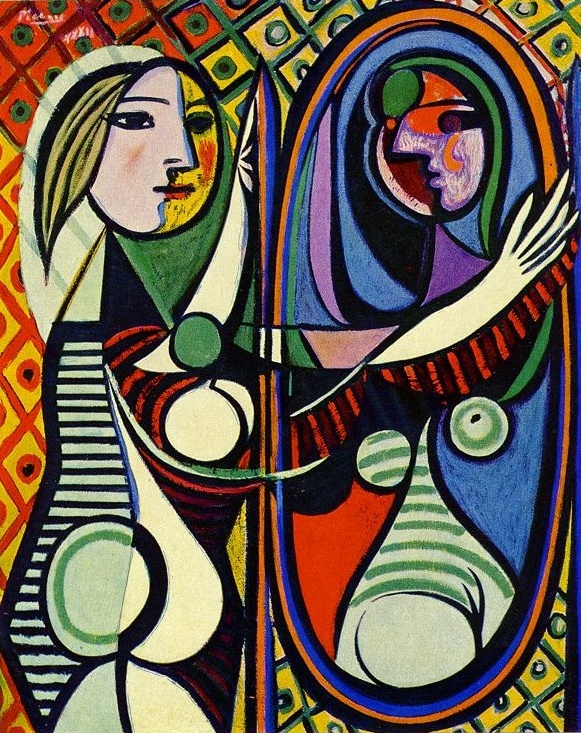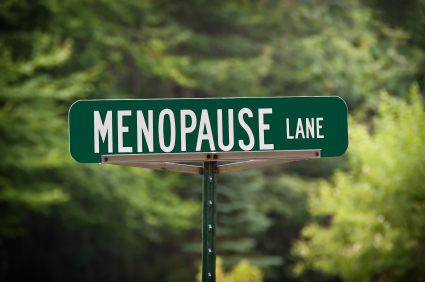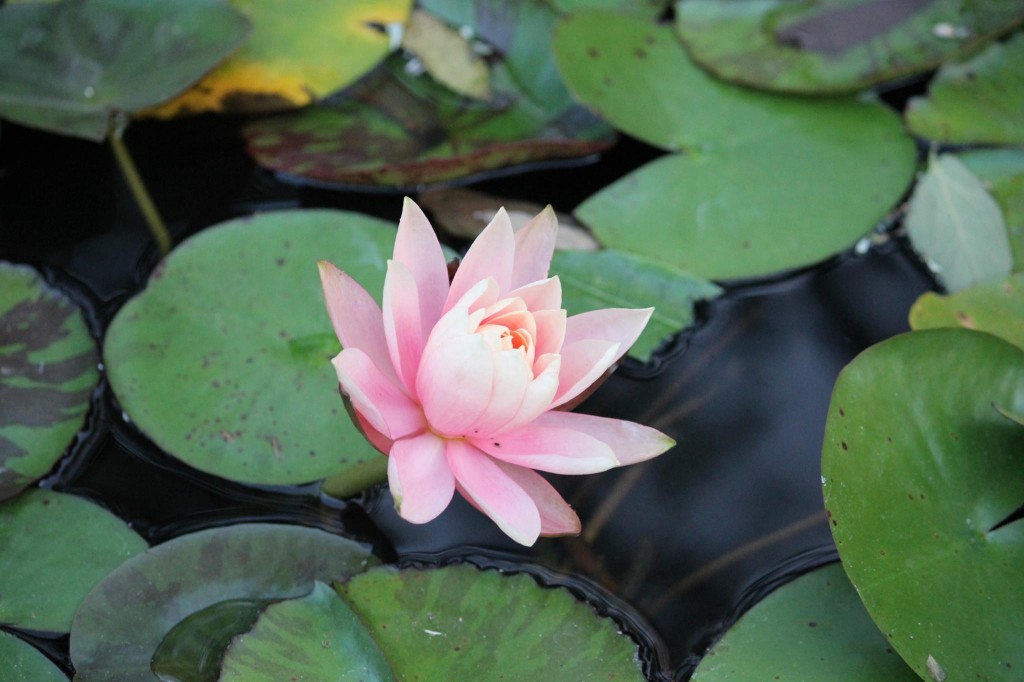Mirror mirror…
[Girl before a mirror. Pablo Picasso. Boisgeloup, March 1932]
What do you see when you look in the mirror? Or perhaps a better question is ‘who?’
I have noticed something odd, something that is sending me into a bit of a tizzy.
I feel older. And the reflection I see in the mirror is not something that I like very much.
It’s a bit of a shock, as I’ve always managed to keep the aging bug at bay. I’ve spent years exercising daily, eating right and engaging in strategies that are supposed to boost physical and emotional health and wellbeing.
Yet, something is missing. A piece of me.
I spend a lot of time on this blog talking about aging and the importance of seeing yourself from the inside out. I’ve discussed what it is like to become invisible in the workplace, how our bodies are redefining themselves, often without our help or intervention, and how old habits are starting to die hard, really hard. I’ve tried to empower you to take charge and accept, but not without going down with a fight against the more negative aspects of the aging process. I wonder where I’ve lost myself within this equation.
Anais Nin is quoted as writing that we don’t see things are they are, we see things are we are. But what happens when what we are, what we’ve become, is skewed by our changing vision? How do we navigate that path without the self-criticism and negative self talk, you know, that voices that we use to tell ourselves that we look old, that our face is sagging and the lines are growing deeper, that the cellulite is more defined, that our midsection appears to have added a bit of extra cushion? When is the appropriate time to rewind and erase the tape and create a new voice?
That time, at least for me, is now.
I apologize for the personal nature of this post, the rambling self indulgence; it’s likely that you are wondering what the heck I am talking about and why, after all, this blog is about evidence and information and data. But I realized this past weekend that the me in ‘menopause’ has somehow gotten lost in the Flashfree shuffle. And that when I actually take stock, I feel a bit long in the tooth.
I’d like to hear from you, dear sisters, about your favourite strategies for overcoming self doubt, for changing the mirror image, for turning off the voices and for freeing your body, mind and soul from the aging bug.
This week, I am turning myself over to you. And I want to hear from you.
Who do you see when you look in the mirror?
Read More
Don’t be cool. Be Super Cool!
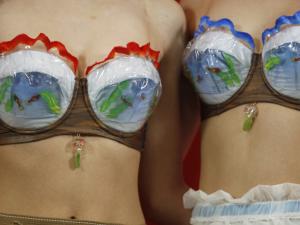 The Japanese lingerie company Triumph has introduced a ‘Super Cool Bra’ to insure that women not only stay cool this coming summer but also keep their electricity bills down. The bra is equipped with removable gel packs that can be placed in the freezer (designed, by the way, to look like a fish bowl), and an attachable ladle so that women can douse themselves with sprinkles of water when the gel packs don’t quite do the trick. There is also a removable fan that can be used any time to boost the chill factor to ‘Super.’ And to complete the package, the bra also includes a sprig of mint and a wind chime to boost other senses that will provide a sense of cool.
The Japanese lingerie company Triumph has introduced a ‘Super Cool Bra’ to insure that women not only stay cool this coming summer but also keep their electricity bills down. The bra is equipped with removable gel packs that can be placed in the freezer (designed, by the way, to look like a fish bowl), and an attachable ladle so that women can douse themselves with sprinkles of water when the gel packs don’t quite do the trick. There is also a removable fan that can be used any time to boost the chill factor to ‘Super.’ And to complete the package, the bra also includes a sprig of mint and a wind chime to boost other senses that will provide a sense of cool.
The point of this neat design is evidently to encourage Japanese consumers to cut down on their electricity consumption during the coming Japanese summer and sadly, the bra will not be massed produced. However, when I first stumbled across this wondrous design, all I could think was ‘menopause.’
Gel packs, ladles, fans – it’s a veritable hot flash bust-er!
Anyone want to bet on the knock-offs? I may need to take a trek to NYC’S Canal Street in search of a Super Duper Cool Bra. Ladle and fishbowl optional!
Happy Friday!
Read More
Wednesday Bubble: PMS and the ‘pause
Hey all you perimenopausal women! Have you been taking a familiar walk of late? If you are anything like me, wondering how the walk down (Peri)Menopause Lane has turned out to be an PMS nightmare of epic proportions, take some comfort in knowing that you are not alone. In fact, while I remained convince most of my life that PMS would disappear as my menstrual cycle went awry, it’s been anything but. If possible, it’s worse than ever.
Turns out that a primary culprit may be exogenous (outside or external) progestogen, the type found in hormone replacement therapy (HRT) or oral contraceptives. PMS symptoms — depression, anxiety, mood swing, anger, lethargy, bloating, weight gain, headache or joint or breast tenderness — tend to flare during the luteal phase of the menstrual cycle, that is, before ovulation. And women who are subject to PMS during this time are believed to have a heightened sensitivity to the increase in progesterone levels (even if levels are lower in relation to estrogen during perimenopause) as well as malfunctioning neurotransmitters that cause the central nervous system to go a bit haywire. Add outside sources of progesterone and you’ve got a veritable pot of angst ready to boil over at a moment’s notice.
But what if you are not taking exogenous progesterone? Well, you still may have a heightened sensitivity to the increase in progesterone levels that occur post-ovulation. For perimenopausal women in particular, experts recommend stopping smoking and trying to maintain a healthy weight, especially if your practitioner recommends the addition of estrogen. In a related editorial, there is also a reference to a fruit extract known as Chasteberry (Vitex agnus castus) which was shown to control irritability and mood swings in a scientifically-sound, placebo-controlled trial.
If you prefer to go the pharmacology route and don’t want to take hormones, there has been some work done that shows that SSRI antidepressants (in much lower doses than those used for depression) can be useful in PMS (but of course, can subject women to certain side effets, such as tummy woes, insomnia, headache; these can be better avoided through cyclical use). The last resort? Hysterectomy, at least according to experts (rather extreme, don’t you think?). Mostly though, consider other options – exercise or vitamin B6 also have some clinical evidence to back their use. Finally? Before you take that walk down Menopause Lane, take a breath. Chances are that the worst of it will be behind you before you know it.
Read MoreHousehold work..the key to better sleep?
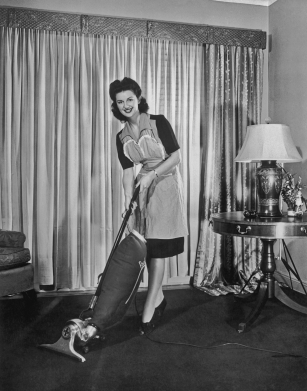 Have I got your attention yet?!
Have I got your attention yet?!
It’s no surprise that hot flashes and night sweats rank among the most important factors when it comes to poor sleep. However. less clear are the factors that may provide a buffer against the flashes. And aside from the usual suspects e.g., crankiness and moodiness or the inability to focus, poor sleep has been linked to heart disease and obesity, among other less desirable health conditions.
So, what can you do?
I’ve written about the benefits of physical activity and amelioration of menopausal symptoms many times on Flashfree. And, I imagine I will continue to do so. But what about sleep? There is evidence that physical activity can help bolster both sleep quality and sleep quantity. Yet, few people have examined the domino effect, i.e. fewer hot flashes ← physical activity → better sleep. Moreover, even fewer have considered the benefits of non-leisure physical activity, like housework.
Now, before you accuse me of setting women back 60 or 70 years, let’s consider exactly what I am suggesting.
According to research, women participate in less leisure time physical activity but greater levels of household physical activity than their male peers. This is apparently truer among ethnicities other than Caucasian (especially African American), who also tend to have greater levels of obesity and poorer sleep characteristics. So, it would follow that by increasing both, women might fare better in the sleep department, right?
In fact, when researchers took a small group of women participating in the larger SWAN study and evaluated their self-reported and scientifically measured sleep patterns for four nights, that is exactly what they found. The group, which was comprised of both White and African-American women, reported having flashes or sweats, were between the ages of 54 and 63, had an intact uterus and were not on medications that could affect hormone levels or symptoms. And while the number of women was quite small (only 52), they fit into the full spectrum of BMI targets (from normal to obese to overweight). In addition to sleep patterns, they also shared details of their most common daily physical activity (how often, how long and how intense) and household/caregiving responsibilities (time spent caregiving, preparing/cleaning up after meals, and routine chores as well the intensity of these activities).
Not surprisingly, women who had greater levels of leisure physical activity were 8 times more likely to report that their sleep quality was better than their less active peers. And, women who reported greater household, non-leisure physical activity awakened fewer times during the night, but only if their BMI levels were lower. Yet, the benefits were mostly seen more among White women. Even more troubling is that the researchers say that they could not determine the ‘why’ of these findings, even though they conducted several different types of analyses and comparisons.
The good news is that for some women, engaging in greater levels of household physical activity and leisure physical may reduce sleep disturbances, especially if they are not overweight. For others, especially my African-American sisters, the mystery remains. African-American women often report more severe hot flashes than their White peers. And while experts have pointed fingers towards rates of obesity or distinctions in estrogen levels or smoking history, the reasons remain unclear.
Meanwhile, while I am not necessarily suggesting that you increase your household responsibilities, I do believe that even with the limitations of this study, more physical activity may beget better sleep and possibly fewer or less severe hot flashes. Finally? Can we please find some effective and viable strategies for women of colour? Although the menopause experience may vary by ethnicity, as women, we need to find solutions that work for most of us, not some of us.
Read MoreWednesday Bubble: cultivate your inner lotus
[Photo credit: Priya Ramesh, Coorg India. 2013]
On Monday, I shared information about the benefits of mindful meditation and being present and how they positive affected stress and the hormone cortisol. I cannot stress the importance of incorporating stress busters into your life; not only is your mental health at stake but the risks to your overall health are numerous. If meditation is not your thing, there are other strategies to consider, including yoga, Tai Chi, acupuncture and deep breathing. There is also Qigong.
Qigong is a Chinese practice harkening back more than 4,000 years. In many ways, it incorporates the best of several strategies, including alignment of movement and breath, meditation and yoga (strength, flexibility). My friend and colleague, Jeri Hemerlein, teaches a female-specific form of Qigong at the Yoga Center in Columbia, MD. Known as Radiant Lotus Qigong, Jeri describes it as a flowing form combining ancient Chinese and Tibetan techniques to health issues unique to women. Radiant Lotus Qigong uses the lotus flower as a metaphor for female resilience and flexibility. The movements open the body’s energy, gently stretching and releasing tension from muscles, joints and spine while waking up the immune system. The form seeks to enhance the whole body health of women from menstruation to post menopause, while supporting the Divine Feminine nature and helping the woman return to an innate state of loving compassion, wisdom and inner strength during times of stress and intense emotions. The form was created by Advance Qigong practitioner Daisy Lee, who developed it after studying with various Qigong teachers who were able to successfully address women-specific issues through original and individual forms.
If you visit Daisy’s website, you can learn more. Or, if you are local to the DC/MD area, you can attend a workshop that I am blessed to be giving with Jeri on April 23, 2013 at 6:30 pm in Annapolis. ‘Cultivate Your Inner Lotus: Menopause, Stress & Qigong” aims to help you gain a better understanding of stress during menopause and provide you with specific techniques to address it on your own. I hope that you’ll consider joining us.
Cultivating your inner lotus may be the best thing you can do for yourself.
Read More






